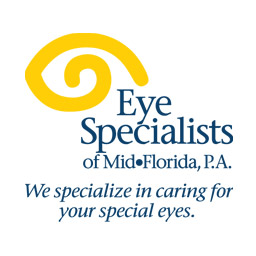Posted by: Eye Specialists of Mid Florida in Blog

By Stuart Harrell, O.D. Board Certified Optometric Physician
Specialty contact lenses encompass a variety of lenses to help with many different problems.
- Keratoconus
- Pellucid Marginal Degeneration
- Post Corneal Transplant Surgery
- Severe Dry Eye
- Corneal Scars (trauma, infection)
- Large amounts of Astigmatism
- Discomfort with current contacts
- Progressive nearsightedness (typically young children that are getting more nearsighted each year)
Within the specialty contact lens family, there are several different types of specialty contacts.
Scleral Contact lenses
These are rigid gas permeable (RGP) contacts that are a bit larger than most soft contact lenses. Surprisingly, while these are larger than traditional gas permeable contact lenses, they rarely cause discomfort. Many patients that have never worn contacts before find these lenses to be very comfortable the first time they put them on. Due to the size and stability of this lens, vision, in my experience, is unsurpassed. While many of my patients were prior “traditional” gas permeable contact lens wearers, once they switched to scleral gas permeable contact lenses, they found that comfort was far better, the lenses didn’t pop out unexpectedly, they didn’t create irritation to the surface of the cornea. Currently, scleral contact lenses are my lenses of choice for most of my complicated fits.
Hybrid Contact Lenses
These lenses are unique in that they are a combination of RGP and soft materials. The central portion of the lens is a rigid gas permeable lens with a surrounding soft “skirt.” The benefits of this lens are numerous. The soft “skirt” allows the patient very good comfort while the optics of the rigid lens provides good vision in most cases. For most people, the lenses are easy to handle and are easy to care for.
Rigid Gas Permeable Contact Lenses
Rigid Gas Permeable Contact Lenses have been around for a very long time. Many people have worn old PMMA lenses and transitioned to RGP’s due to the “gas permeable” nature of the lens. These lenses used to be the best option before Hybrids and Sclerals became available. RGP contacts still have a place, in my opinion, for the less severe cases. Many pts that are new to conditions that may require a specialty contact lenses often times will bypass RGP’s due to the discomfort that many people encounter while acclimating to them. With RGP’s, it is common to get debris under the lens, thus causing very notable eye discomfort that typically requires taking the lens out and cleaning in and reinserting it. Typically, these lenses are less expensive than both Hybrids and Sclerals. Breakage and loss of RGP’s is fairly common, while they are uncommon with Hybrids and Sclerals.
Ortho K Corneal Molds
It is possible to dramatically slow down the progressive tendency of myopia or nearsightedness. As a person becomes more nearsighted, there is a point where the risk of retinal tears, retinal detachments, glaucoma, cataracts, and maculopathy increase. If a patient becomes severely nearsighted, some of those risks become alarmingly high.
Much like orthodontics, Ortho K corneal molds gently reshape the cornea while the patient sleeps. Upon wakening, the patient removes the molds (for the day) and is able to see without the aid of glasses. Due to the reshaping of the cornea and the refocusing of light on the retina, the eye slows down, and often times stops, the axial elongation which leads to progressive nearsightedness.
In addition to helping slow down progressive nearsightedness, Ortho K corneal molds can help patients with eyes too dry for traditional contact lens use. For patients that over wear their contact lenses, Ortho K can be a much healthier alternative.
